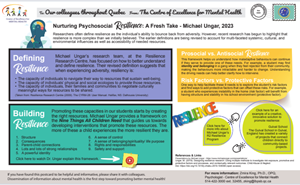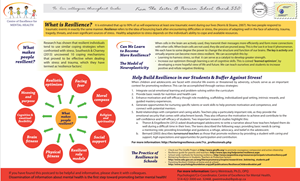|

|
|
 |
Nurturing Psychosocial Resilience:
A Fresh Take - Michael Ungar, 2023 |
|
What is Resilience? |
For more information about Resilience:
Bolstering Resilience in Students: Teachers as Protective Factors
Kids Can Cope: Parenting Resilient Children at Home and at School
https://resilienceresearch.org
https://developingchild.harvard.edu/resource-guides/guide-resilience
Books:
The End of Trauma by George Bonanno
Working with Children and youth with Complex needs:20 Skills to Build Resilience by Michael Ungar
Change your world: The Science of Resilience and the True Path to Success by Michael Unger
Videos:
Cultivating Resilience
Why flexibility is key to resilience